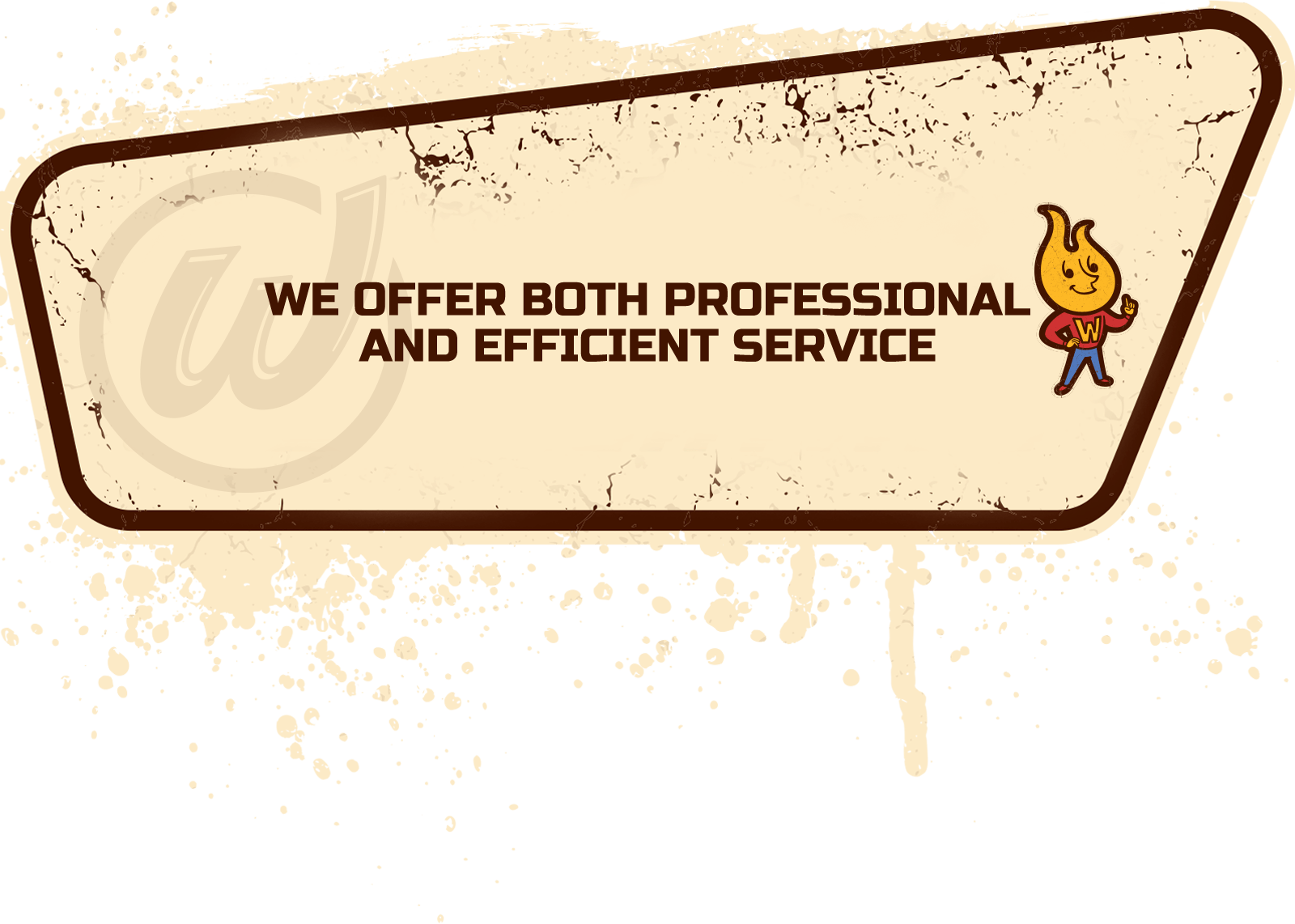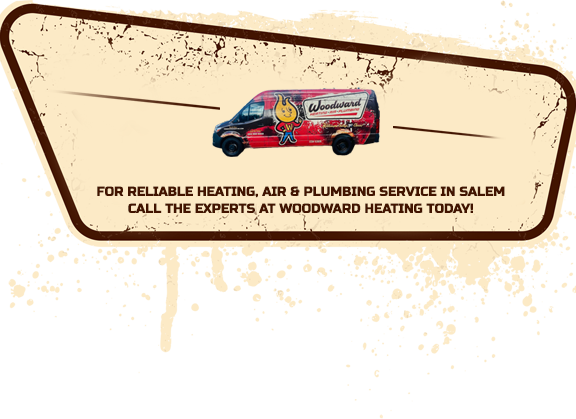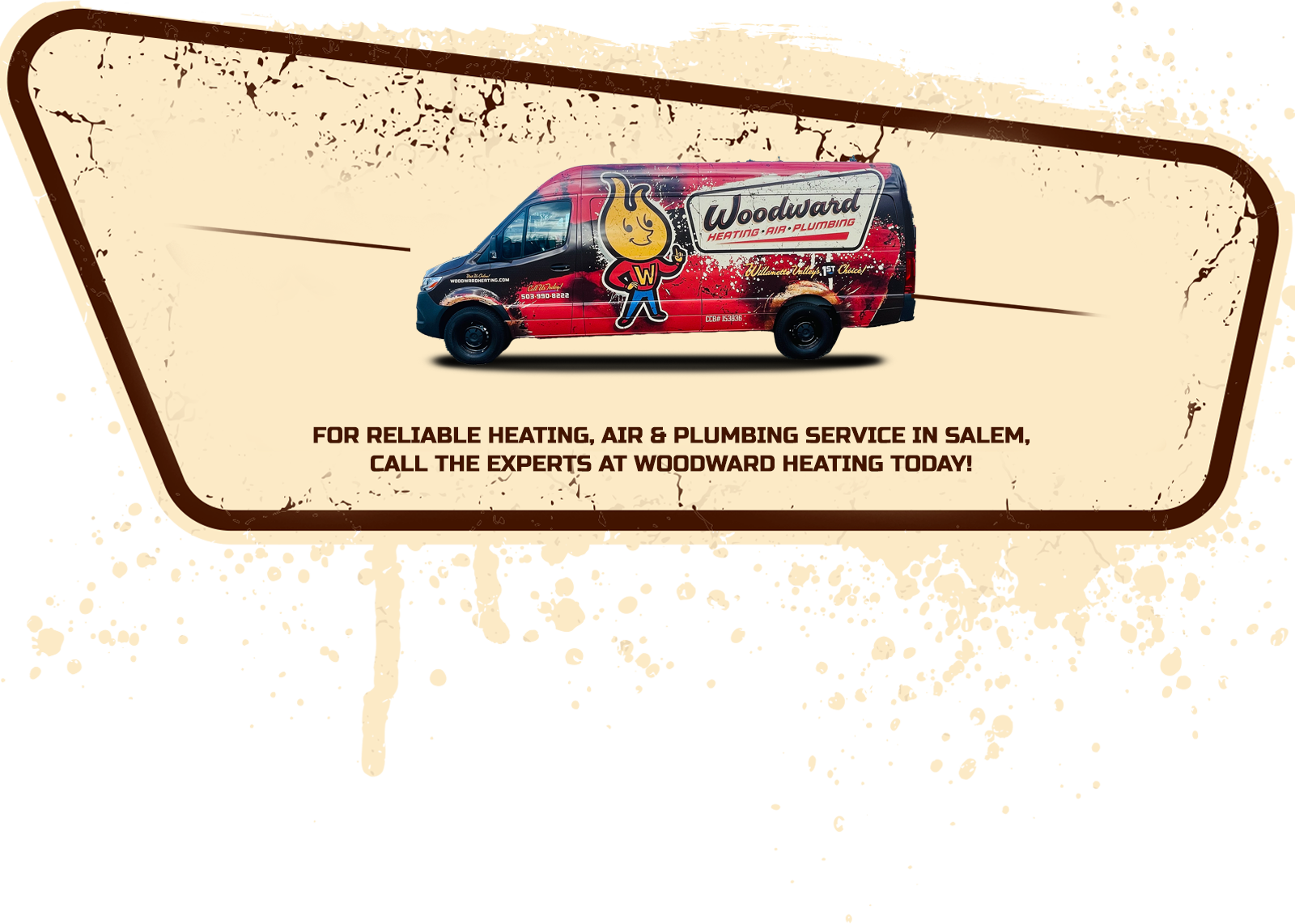
Heating, ventilation, and air conditioning (HVAC) systems account for a large share of energy use in homes and businesses across the United States. The U.S. Department of Energy notes that they can represent up to 50% of residential energy consumption. With energy prices climbing and climate concerns growing, many Salem homeowners are turning to renewable options. Wind energy, for example, can reduce reliance on the grid—but can it generate enough electricity to support HVAC systems?
While solar power often gets the most attention, small-scale wind turbines are capable of producing enough energy to run most systems.
Wind turbines convert wind energy into electricity, which can support HVAC systems and lower carbon footprints. Woodward Heating Air Plumbing in Salem, OR, wants to help our customers realize the possibilities. Our AC and heating service experts will explore how wind turbines work, their benefits and limitations, and their potential role in powering HVAC systems.
The Energy Demands of HVAC Systems
Small wind turbines refer to systems with a capacity of 100 kilowatts or less, according to the U.S. Department of Energy. These small systems provide just enough power for residential or light commercial use.
Wind turbines work by capturing wind with their blades and spinning a rotor connected to a generator. It converts the wind’s kinetic energy into electricity.
There are two main setups: grid-tied and off-grid. Grid-tied systems feed excess power back into the grid, while off-grid systems provide electricity directly to the connected source.
It’s essential to have plenty of installation space for these systems. Although smaller than industrial-sized wind turbines, they require an installation height of 80-100 feet and wind speeds of at least 9 mph for optimal performance. Even if you only produce a small percentage of your power needs, you can reduce your reliance on the grid and lower your monthly costs.
Benefits of Wind Energy
If you’re exploring your options for renewable energy, it’s helpful to understand the benefits of small turbines. Knowing the benefits can help you make an informed decision.
Savings
One of the most significant advantages is the cost savings these systems provide. According to the DOE, the average household can save 50% to 90% on electricity. Even if you only use it as a supplemental source for your HVAC, wind turbines can offset some of the high grid demand.
Sustainability and Carbon Reduction
Wind power is an entirely renewable energy source that does not emit any greenhouse gases during operation. A single 10 kW turbine can offset 12 tons of CO2, according to the EPA. This is like planting over 600 trees per year.
Energy Flexibility
Wind turbines can continue providing energy, even when the grid goes down, when paired with battery backup. HVAC systems can benefit from this flexibility, particularly during extreme weather conditions.
Compatibility with HVAC Demands
Heating needs usually rise when strong winds hit, especially during winter storms. Because of this, wind turbines can work well alongside HVAC systems.
Challenges and Limitations
There are days when variable wind sources can make running an HVAC on a wind turbine alone impossible. Wind availability is best in open rural areas.
Residential-scale systems also have a steep upfront cost of several thousand dollars. Still, the return on investment is relatively high. Installation requires at least one acre of land, and some regions have restrictions on height, noise, and aesthetics.
Connecting wind turbines to local grids requires interconnection agreements, which may have varying requirements. It’s essential to consult with your utility provider to ensure compliance.
Ultimately, wind turbines require regular inspections, lubrication, and maintenance to ensure optimal performance and reliability. These systems typically last 20-25 years with proper care.
Environmental Impact Beyond Carbon Savings
Technicians inspect, lubricate, and maintain wind turbines to keep them running reliably. Proper care allows them to operate for 20 to 25 years.
Another impact involves grid stability. When HVAC systems draw power during peak times, utilities often rely on backup generators powered by coal or natural gas. Even small contributions from wind turbines can add up. They can reduce the need for these plants, protecting the environment.
Many new turbine models include features that protect wildlife. Designers slow the blade speeds to reduce risks for birds and bats.
Practical Considerations for Homeowners
Before adding small wind turbines to help power their HVAC systems, property owners need to think through several important factors. Getting input from a professional can make this much easier.
Site Assessment
Wind energy is most effective in areas with consistent wind. The National Renewable Energy Laboratory offers tools, such as wind maps, to check the annual average wind speed in your location.
Space and Siting
You must install wind turbines in open spaces so that nothing blocks wind movement, including buildings or trees. Towers must be at least 30 feet higher than any obstacles within a 300-foot radius. Wind turbines typically do not perform well in urban areas because buildings can block airflow.
Zoning and Permits
Some municipalities limit towers to 60-80 feet. Some do not allow them at all. Reviewing local ordinances can ensure you have the proper permits to install a wind turbine.
Professional Guidance
Working with our professionals at Woodward Heating Air Plumbing ensures compliance with utility interconnection rules and helps ensure the proper placement of turbine towers. Our professionals will guide you through every step of the process.
Future Trends in Residential Wind Energy for HVAC
Small wind turbine technology is evolving rapidly in response to the increasing demand for renewable energy. One recent trend is the development of turbines for low wind speeds. They can continue to generate power, even when average winds are only between 5 and 7mph. This is especially essential in suburban neighborhoods where strong, consistent winds are rare.
Another exciting advancement is the growth of hybrid energy systems. Many homeowners pair wind turbines with solar panels and home battery storage to create a more reliable year-round setup. Since HVAC systems demand energy in summer and winter, having two renewable energy sources ensures more consistent comfort.
Many homeowners also pair wind turbines with smart HVAC systems. Smart thermostats and connected HVAC units can adjust energy use automatically when more wind power becomes available. This combination helps maximize efficiency, saving homeowners even more money.
Finally, government support is increasing interest among homeowners. Federal incentives, such as the 30% tax credit and potential state rebates, make wind energy more affordable. As turbine technology improves and costs decrease, wind systems will become a standard tool for homeowners.
A Clean Energy Future for HVAC
Small wind turbines provide a means to supply HVAC systems with clean, on-site energy. They offer benefits such as reduced electricity costs, a smaller carbon footprint, and reduced reliance on the grid. While the upfront investment and siting considerations bring challenges, technological advances and future design changes will make these systems more attainable.
Woodward Heating Air Plumbing is a second-generation, family-owned and operated HVAC company in Salem. We have proudly served our customers since 1989, continually bringing the latest innovations to our services.
Customers trust us for our upfront pricing, certified and knowledgeable heating and AC service technicians, and exceptional customer care. Whether you’re exploring ways to save money on your electricity bills or want to help the environment, we are here. You’ll get honest advice, reliable service, and local support.
Contact Woodward Heating Air Plumbing today to get all your HVAC and plumbing questions answered in Salem.






